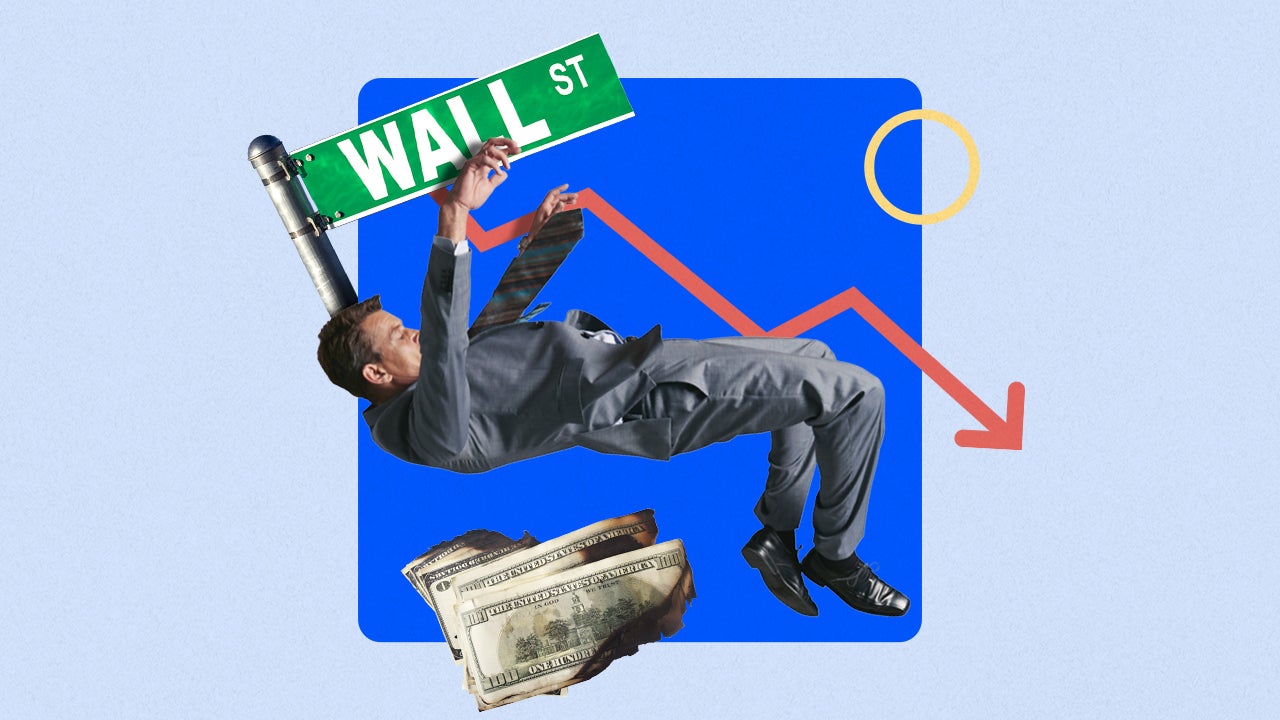Survey: Economists see unemployment surging to 4.5% and sharp job growth slowdown

The job market has so far been gliding into a slowdown. Hiring is cooling, but only gradually, and not so dramatically that it’s prompting a major uptick in unemployment.
The question, however, is how much longer that may last.
Employers are expected to add roughly 29,000 new positions each month between now and June 2024, according to the average forecast in Bankrate’s quarterly Economic Indicator poll. If it comes to fruition, the U.S. economy will have created about 348,000 net new positions over the next 12 months. That would be about 11 times slower than the past 12 months of job creation, with employers creating about 3.8 million positions since July 2022.
The good news is, the projection suggests the economy will add more jobs than it subtracts over the 12-month period. Economists also marked up those forecasts from the prior-quarter survey, when they penciled in job cuts worth an average of roughly 21,000 each month between April 2023 and March 2024. Yet, it’s a pace that’s unlikely to keep up with population growth, while some industries could face tougher employer outcomes than others.
Unemployment is expected to hit 4.5 percent by the end of June 2024, up from its current level of 3.6 percent, economists’ average forecast also shows. Joblessness has never jumped by half a percentage or more absent a recession, suggesting a burst in unemployment may be the prerequisite for a downturn. Yet, if it comes to fruition, the job market need not be as severe as during the coronavirus pandemic or the Great Recession, when joblessness hit double-digit levels.
Americans have suffered through double-digit unemployment rates in the previous two downturns. So, there’s much to be said about avoiding a similar, more difficult, fate next time around.— Mark Hamrick, Bankrate senior economic analyst
Key job market insights from Bankrate’s Economic Indicator survey
- Economists, on average, see joblessness rising almost a percentage point by June 2024, hitting 4.5 percent from its current 3.6 percent level.
- Experts see employers creating roughly 29,000 new positions each month on average over the next year, amounting to 348,000 new jobs by June 2024.
- That estimate foreshadows a sharp slowdown. Employers have added about 3.8 million jobs over the past 12 months, with job creation since July 2022 averaging about 316,000 monthly.
- Economists’ forecasts are in line with the Federal Reserve’s estimates, with policymakers’ median projection calling for a 4.5 percent unemployment rate by the end of 2024.
Economists expect a tougher job market by this time next year
The largest majority of economists (or 61 percent) see job growth in positive territory over the next 12 months. But even though it’s a smaller share, 33 percent still see hiring averaging out to a negative number, suggesting that the number of jobs in the U.S. will shrink by June 2024. Six percent didn’t provide a forecast.
Some economists were more upbeat than others. One in 3 economists (33 percent) see employers adding an average 90,000 or more jobs each month for the next year. The highest average monthly projection hit 225,000, signaling that employers could create 2.7 million jobs by June 2024.
That upbeat forecast would mark a considerable slowdown from the past two years of rapid job creation, but it would still mean the job market is more robust than it was before the pandemic. Employers created about 2 million jobs on-net in 2019.
“This is an extraordinarily strong job market,” said Bernard Baumohl, chief global economist at the Economic Outlook Group who provided the individual forecast. “The hunt for talented workers will persist even if the economy weakens. That’s because it is not the business cycle that is driving all this hiring, but a structural shortage in the supply of labor.”
But the lowest forecast called for a steep decline in jobs: a loss of 330,000 jobs on average each month between now and June 2024. If it proves to be correct, it will amount to about 4 million jobs lost between now and next summer, the sharpest contraction in the job market since employers cut about 8.7 million jobs in 2020.
“These job losses would largely be driven by the impact of tighter credit conditions and higher borrowing rates on these industries, as well as the weakened desire of consumers to spend, given their increasing concerns regarding the potential onset of a recession and their rising credit card debt,” says Nayantara Hensel, Ph.D., chief economist at Seaborne Defense who penciled in the lowest job growth forecast.
Hensel estimates that job losses in leisure and hospitality, transportation, retail trade, as well as manufacturing and construction will offset gains in education, healthcare, government and social assistance.
Meanwhile, projections for the unemployment rate ranged from a low of 3.8 percent to a high of 5.3 percent.
But it’s never easy to predict where the world’s largest economy — and its job market — could be heading. Since the fourth quarter survey of 2021, economists have been expecting a tougher slowdown in the job market than has come to fruition. The surprising strength is traced back to the resilient economy overall, buoyed by consumers’ willingness to keep spending and businesses’ continued interest in hiring despite rising interest rates and elevated inflation.
It means Americans may want to hope for the best but prepare for the worst. Pay down debt, keep a strong handle on your monthly budget and find ways to save for the unexpected as much as possible.
“It’s hard to predict what unemployment will be in 12 months because we don’t know what monetary policy will be like over that period,” said Patrick Horan, research center at the Mercatus Center at George Mason University who didn’t provide a job growth forecast. “Right now, I’m cautiously optimistic about a ‘softish’ landing, where the labor market weakens a bit, but not too dramatically.”
Hear from the experts
A slowing labor market is a feature, not a bug of the Federal Reserve’s restrictive monetary policy. Employer demand for workers remains strong by historic standards, but layoffs in some sectors and cooling wage growth point to a slowing labor market. As excess consumer-savings cushions slowly deflate and the Fed’s monetary tightening works its way through the economy, labor demand will likely slow.
— Odeta Kushi, deputy chief economistFirst American Financial Corporation
This is an extraordinarily strong job market. The hunt for talented workers will persist even if the economy weakens. That’s because it is not the business cycle that is driving all this hiring, but a structural shortage in the supply of labor.
— Bernard Baumohl, chief global economistEconomic Outlook Group
We continue to foresee hiring freezes and strategic resizing decisions along with some wage growth compression in the coming months, but we don’t anticipate a severe employment pullback.
— Gregory Daco, chief economistEY
The labor market will continue to soften over the next year with job growth slowing and the unemployment rate ticking higher in the face of ongoing interest rate hikes.
— Dante DeAntonio, senior directorMoody's Analytics
Why we ask for feedback Your feedback helps us improve our content and services. It takes less than a minute to complete.
Your responses are anonymous and will only be used for improving our website.




